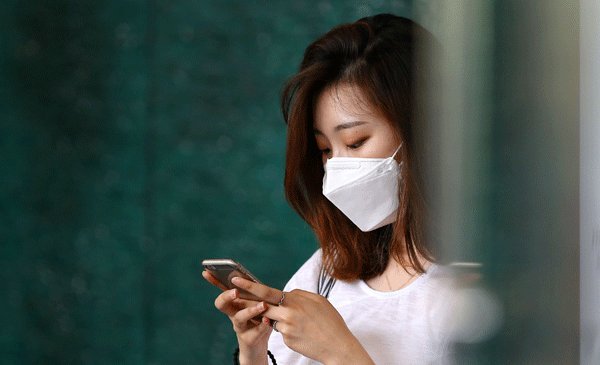South Korea confirmed three more Middle East respiratory syndrome cases and two more deaths Monday, raising the nation’s MERS cases to 172 and the disease’s fertility rate to 15.7 percent.
As of Monday afternoon, the virus has killed 27 people in Korea.
Meanwhile, the number of hospitalized MERS patients decreased to 95 from 101 the day before. Seven more individuals have been discharged from medical facilities, raising the number of recovered patients to 50. The number of people in quarantine has dropped consistently since last week, from 5,930 on Thursday to 3,833 on Monday.
With the number of hospitalized patients declining, the Health Ministry last week said the outbreak was showing signs of losing steam. Dr. Margaret Chan, director general of the World Health Organization, also assured in Seoul on Friday that the outbreak of MERS in Korea could be stopped.
However, concerns are still being raised as all the three newly confirmed patients were diagnosed many days after the disease’s maximum incubation period, which the Health Ministry says is 14 days. This indicates that additional cases may still be confirmed in the future, including among contacts who were not identified in the earlier stages of the outbreak.
As of Monday afternoon, the virus has killed 27 people in Korea.
Meanwhile, the number of hospitalized MERS patients decreased to 95 from 101 the day before. Seven more individuals have been discharged from medical facilities, raising the number of recovered patients to 50. The number of people in quarantine has dropped consistently since last week, from 5,930 on Thursday to 3,833 on Monday.
With the number of hospitalized patients declining, the Health Ministry last week said the outbreak was showing signs of losing steam. Dr. Margaret Chan, director general of the World Health Organization, also assured in Seoul on Friday that the outbreak of MERS in Korea could be stopped.
However, concerns are still being raised as all the three newly confirmed patients were diagnosed many days after the disease’s maximum incubation period, which the Health Ministry says is 14 days. This indicates that additional cases may still be confirmed in the future, including among contacts who were not identified in the earlier stages of the outbreak.

The nation’s 171st patient was exposed to the virus while staying at Samsung Medical Center’s emergency room from May 27-29. It’s been more than 20 days since she stayed at the facility, where 83 others were infected previously.
The hospital, considered one of the top medical facilities in Seoul, is the largest infection source of MERS patients in Korea, accounting for 48.8 percent of confirmed cases.
Most of the 84 patents contracted the disease at the hospital’s emergency room, where the 14th confirmed patient, who is considered a “superspreader,” stayed from May 27-30.
The 170th patient, on the other hand, stayed with the 76th patient at Konkuk University Medical Center in Seoul on June 6. He was officially diagnosed with MERS on Sunday, more than 14 days after being exposed to the virus.
The 172nd patient was exposed to the virus while working as a caregiver at Dae-Chung hospital in Daejeon, a facility that specifically serves elderly patients with chronic conditions.
The last day her facility received a MERS patient ― he left on the same day ― was June 1, and therefore the incubation period should have been over on June 15.
However, the 61-year-old caregiver was diagnosed with the virus on Sunday.
In the case of 171st patient, Jeong Eun-kyung from Centers for Disease Control and Prevention at the Health Ministry said she started showing symptoms on June 9, about 10 days after she was initially exposed to the virus at Samsung Medical Center, but her initial test was negative. She was tested again after developing a high fever on June 17, Jeong said.
Dr. Chan of the WHO last Friday stressed that much about MERS was still unknown and Korea needed to strengthen quarantine efforts continuously.
“There are huge gaps in our knowledge about the MERS coronavirus and the disease it causes,” she said.
“Scientists are not sure where the virus hides in nature, how it spreads, whether asymptomatic carriers play a role in transmission, or even why some patients die and others recover.
”Until we know we have broken the last chain of transmission, we must maintain our vigilance.”
To establish a better system to tackle infectious diseases in future, Cheong Wa Dae invited five experts from WHO and the Centers for Disease Control and Prevention of the U.S., including Sylvie Briand, Director of Pandemic & Epidemic Diseases Department of WHO, and Steve Redd, Director of Office of Public Health Preparedness and Response of the CDC.
The experts will offer their opinions and advices on the current MERS situation as well as preventive measures for other infectious diseases starting this week in Seoul.
Meanwhile, with 19.2 percent of all confirmed South Korean MERS patients turning out to be health care workers as of Monday, a study last year by Dong-a University showed that more than 40 percent of nurses have been infected with diseases at least once while serving at emergency rooms, with some even contracting HIV.
As of Monday, 33 health care workers, including doctors and nurses, had been infected with MERS-CoV. They account for 19.2 percent of all 172 confirmed patients in the country.
By Claire Lee (dyc@heraldcorp.com)









![[Kim Seong-kon] Democracy and the future of South Korea](http://res.heraldm.com/phpwas/restmb_idxmake.php?idx=644&simg=/content/image/2024/04/16/20240416050802_0.jpg&u=)







![[KH Explains] Hyundai's full hybrid edge to pay off amid slow transition to pure EVs](http://res.heraldm.com/phpwas/restmb_idxmake.php?idx=652&simg=/content/image/2024/04/18/20240418050645_0.jpg&u=20240418181020)

![[Today’s K-pop] Zico drops snippet of collaboration with Jennie](http://res.heraldm.com/phpwas/restmb_idxmake.php?idx=642&simg=/content/image/2024/04/18/20240418050702_0.jpg&u=)